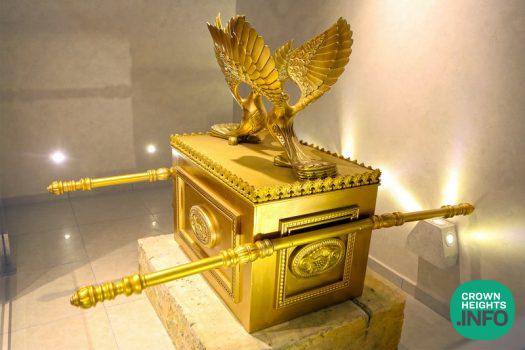
Weekly Dvar Torah: The Great Yomtov of the 15th of Av – A Day of Renewal and Hope
The Mishna says that there were no greater holidays than Chamisha Asar B’Av. One of the many reasons given for the celebration is the full moon that shines in its full glory. However, the classic question arises: why is the 15th of Av any different from any other month when the full moon also shines on the 15th day? The answer lies in the juxtaposition between the 15th of Av and the somber day that precedes it – Tisha B’Av, the darkest day of the year.
On Tisha B’Av, Jews mourn the historical tragedies and destruction that have befallen their people. Yet, immediately following this day of darkness, the 15th of Av emerges as a day of hope and renewal. Chassidus provides a fascinating insight into the significance of this transition.
On the 15th of Av, there is a foretaste of the revelations that will come when Moshiach arrives. It was in 1966, during the visit of Israel’s president Shazar to the Rebbe, that a new Mammar titled “Nachmu Nachmu, 5670” by the Rebbe Rashab was published in honor of the occasion, shedding light on the connection between the 15th of Av and Moshiach’s coming.
The Mammar addresses a profound question: How could tragedies such as the Churban and the subsequent exile occur in the month of Av, a time associated with the attribute of a father, symbolizing love and mercy? The Rebbe draws an analogy to the true nature of a loving father. While a kind and loving father rewards his child when things go well, he also reprimands and may punish the child when necessary. These reprimands come from a place of deep love and concern for the child’s well-being, not out of anger or cruelty.
This concept of fatherhood plays out in the month of Av, where G-d’s relationship with the Jewish people is mirrored. When the people behave according to His will, there is a close and harmonious relationship. However, when they deviate from the path, G-d, like a loving father, delivers reprimands and consequences. It is through this relationship, even during times of darkness and suffering, that the Jewish people express their love and devotion to G-d.
The Jewish people reckon time according to the cycle of the moon. As it waxes and wanes, so does the fate of the Jewish nation. Just as the moon has no light of its own and only reflects the light of the sun, the Jewish people find their destiny bound to the source of all light, G-d. Every month, as the moon disappears and its reflection is concealed from the eye, there is a sense of darkness. But on the 15th of the month, the moon shines in its full glory, signifying a return of light and hope.
This lunar cycle echoes the historical experiences of the Jewish people throughout history. There have been times of prosperity and glory, akin to the full moon’s brightness, such as during the reign of King Solomon, the 15th generation since Abraham, when the Jews ruled the world. And yet, there have been times of darkness and suffering, comparable to the moon’s hidden light, when the Jewish people faced persecution and exile. Those times brought out a deeper level of love even to the point of self-sacrifice for the sanctity of G-d’s name. Despite these challenges, their essence remains, waiting for the moment when the shine will come back in its full glory.
The transition from Tisha B’Av to the 15th of Av takes on a deeper meaning when considering the sun and the moon as symbols. The sun (being the source of light for the moon), can be seen as a representation of the idolaters who recon time based on the cycle of the sun. During the strong summer sun, we may feel subjugated to its might, much like the Jewish people sometimes feel the weight of challenges and suffering. However, on the 15th of Av, the sun’s power weakens, and the moon shines brightly. This represents a time when the Jewish people, after the deep darkness of Tisha B’Av and exile, have earned their connection with G-d on their own merit, creating the strongest bond with Him.
On the 15th of Av, the Jewish people experience a foretaste of the glorious days of Moshiach. They sense the arrival of a period of redemption and reunion with G-d. This day represents a unique opportunity for the Jewish nation to reflect on their relationship with the Divine, to strengthen their devotion, and to look forward to a future filled with hope, blessings, and enlightenment.
In conclusion, the Great Yomtov of the 15th of Av serves as a significant moment in Jewish tradition, offering a day of renewal, hope, and anticipation for the coming of Moshiach. It is a time to reflect on the loving relationship between G-d and His people, understanding that even in times of darkness, His essence and their essence are fused, waiting for the return of light and blessings. The 15th of Av represents a transition from darkness to light, from mourning to hope, and serves as a reminder that redemption and a brighter future are within reach.
Have a G-d loving and fusing Shabbos,
Gut Shabbos
Rabbi Yosef Katzman













